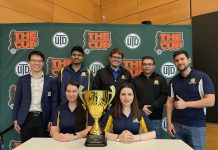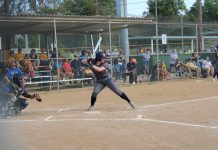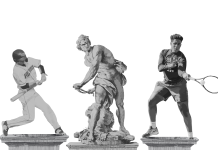Webster University freshman soccer player Gian Scire suffered a mild concussion in August this past season. Before he was able to return to play, he first had to pass a test on the computer.
In the fall of 2011, the St. Louis Intercollegiate Athletic Conference adopted a new law requiring its student athletes to take neurocognitive tests before the season and after a concussion is suspected. The test is designed to determine the student athletes’ cognitive functions such as:
— reaction time
— visual memory
— non-verbal problem solving.

There are multiple concussion management companies who provide a version of a neurocognitive test. ImPACT (Immediate Post-Concussion Assessment and Cognitive Testing) is the program SLIAC Commissioner Will Wolper said most, if not all, SLIAC institutions use, but they are not required to use ImPACT’s test. Team physicians use ImPACT in the National Hockey League, Major League Baseball, Major League Soccer and most National Football League teams.
The test takes about 20 minutes. The athletes complete their preseason test to get a baseline score. When a concussion is sustained anytime during the season, the athlete takes a post-concussion test.
It is required for an athlete who suffers a concussion to take the post-concussion test between 24 and 48 hours after the injury. The results are then reviewed by an athletic trainer, or in some cases a neuropsychologist, by comparing them to the baseline test of the athlete. Comparing the scores determines the seriousness of the injury, and whether or not a concussion was sustained.
Eureka College (Ill.), Greenville College (Ill.), MacMurry College (Ill.) and Westminster College (Mo.), the only schools in the SLIAC with football programs, were using ImPACT testing before the concussion policy was updated. Those schools brought the idea to Wolper. Josh Thompson, Westminster College (Mo.) athletic trainer and governmental affairs committee chair for the Missouri Athletic Trainers Association, has used baseline tests since 2010 and was at the forefront of expanding the test across the conference.
“ImPACT is the most (commercially) used and it is a better platform with all the data being stored online to make it easier to retrieve,” Thompson said. “It’s the one that had the most backing and research behind it.”
ImPACT has three package options for purchasing the neurocognitive tests. The one that SLIAC schools use is $500 annually for 300 baseline tests and 90 post-injury tests, Wolper said.
Each institution is required to pay the fee. Wolper receives a grant from the NCAA each year that is required, among other things, to be spent on student athletes’ well being. One in four years, the conference pays the $500 bill for each institution with that grant money, Wolper said.
Because Webster does not have a football program and has fewer student athletes, its number of concussions is smaller than SLIAC schools with football. Still, all SLIAC schools pay the $500 ImPACT test package. Even though Webster doesn’t use the maximum baseline or post-concussion tests, Martin Fields, Webster athletic trainer, said the ImPACT package is still completely worth it.
“You can’t treat a volleyball girl’s concussion any different than I would treat a football player’s concussion,” Fields said. “It is a very good tool to have. I can know today she was here, and when she had her concussion she is having some significant issues other than memory that you can’t get with a SCAT test.”
The SCAT (Sideline Concussion Assessment Test) is used by trainers immediately after the concussion on the field to determine whether or not a concussion was sustained. The trainer will ask questions about neck and head pain, then the athletic trainers test the patient’s memory with questions about the day of the week, current location or score of the game.
Fields and Thompson also agreed that the neurocognitive tests are helping the athletes better understand how a concussion is affecting them.
They said most athletes want to begin participating again, many times sooner than they are medically safe to play.
The ImPACT results give athletes a straighter and possibly more understandable answer as to why they aren’t ready to participate again.
“They want to play. They’ll lie to play,” Fields said. “Kids want to say, ‘I’m fine.’ We do the test … (and I say,) ‘I’m sorry. It doesn’t add up, we’re going to take a step back and return to our protocol of rest until you are symptom-free.’”
Scire said he felt no symptoms of a concussion after returning to play and felt the process may be slow but understood the reasons with the help of the test results.
“I’m like, ‘Yeah, we’re going too slow. Let’s speed it up,’” Scire said. “I’m anxious to get back. I’m a freshman, and I don’t want to miss anything that could help me.”
The baseline test is still just one of the steps SLIAC schools use in concussion management. Athletic trainers agree the neurocognitive tests alone have flaws.
“There might be some flaws in it, but that’s why we do the graduated return participation,” Thompson said. “If they were able to slip through the first two stages, that baseline test will normally catch any problems we are going to have.”
ImPACT salesman Matt Day said the neurocognitive test is just one tool the teams’ physicians should use to understand a player’s injury.
Thompson and Fields said they use ImPACT for about one-fourth of the determining factors if a concussion was sustained. That percentage increases for determining if an athlete has fully recovered.
“The ImPACT test shows us some things that I can’t determine with conversation,” Fields said. “I can ask them questions about short-term memory, but if it’s on the computer and it’s just numbers, it’s like one plus one is always two.”
To learn about what athletes do for the baseline test, click here.




